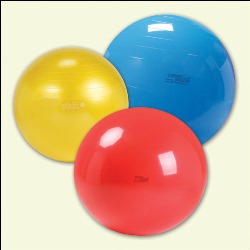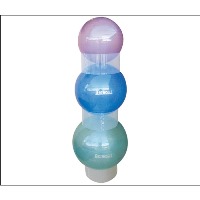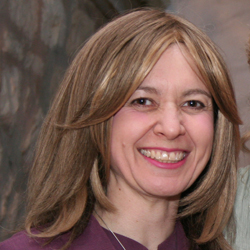 I’ve had the joy of working in four different countries and across a variety of clinical settings. No matter the environment or the age of the client, certain tools remain universally valuable—and therapy balls are one of them. I’ve successfully used therapy balls with individuals recovering from head injuries or strokes, as well as with children with learning challenges and even clients with visual impairments.
I’ve had the joy of working in four different countries and across a variety of clinical settings. No matter the environment or the age of the client, certain tools remain universally valuable—and therapy balls are one of them. I’ve successfully used therapy balls with individuals recovering from head injuries or strokes, as well as with children with learning challenges and even clients with visual impairments.
I think balls of various sizes, textures, and shapes are a tell-tale sign that you have stepped into an OT room or department. Therapy balls are valuable in meeting so many goals and certainly show how dynamic OT is and how creative we need to be with every treatment plan and session. Let’s face it, balls are fun for most ages. They are colorful and versatile. Being round means that they are dynamic, resulting in the ability to grade therapy sessions by working on an unstable surface.
Therapy balls are valuable for improving:
- motor control
- muscle tone
- trunk control or strengthening core muscles
- upper limb function for clients with orthopedic or neurological disorders
- introducing fun games and exercises into therapy
- eye-hand coordination
- righting and balance reactions
- weight shift
Balls can encourage a child to feel excited to come into a treatment room or to prepare a blind child for hippotherapy. Balls can be just as important to an older woman needing to reduce internal scarring from repeated abdominal surgery.
There is one problem with therapy balls: storage. Without due care, your therapy room can quickly become messy, cluttered, and a potential safety hazard. We don’t want our clients tripping over equipment!
 If you’ve ever worked in an OT department or been involved in developing a therapy department in limited space, then you can appreciate the need to organize physio/Gymnic balls. There are times that facilities will look into securing a suitable shelf, setting up a hammock specifically for therapy balls, or acquiring an array of other wall or ceiling fittings.
If you’ve ever worked in an OT department or been involved in developing a therapy department in limited space, then you can appreciate the need to organize physio/Gymnic balls. There are times that facilities will look into securing a suitable shelf, setting up a hammock specifically for therapy balls, or acquiring an array of other wall or ceiling fittings.
But what can do you do if your practice is in rented space that doesn’t permit attaching anything to the walls or ceilings? Or if your OT room is in a building with prefabricated walls and ceilings, reducing the strength and stability of the internal structure?
When I started in private practice, one of the first pieces of equipment I obtained was a large therapy ball with bells inside. Amongst my first private clients was a child who was blind from birth and severely sensory-deprived, hence the bells within the ball. It was wonderful to introduce a ball game in which he could participate because he could hear where the ball was.
 The problem was how to store the therapy ball. I grappled with this dilemma until I discovered the wonderful Ball Stacker. It looks professional and neat and makes a good impression when a parent comes into the therapy room for the first time. Now you can use therapy balls even if you can’t attach brackets, shelves, or hammocks to the wall or ceiling.
The problem was how to store the therapy ball. I grappled with this dilemma until I discovered the wonderful Ball Stacker. It looks professional and neat and makes a good impression when a parent comes into the therapy room for the first time. Now you can use therapy balls even if you can’t attach brackets, shelves, or hammocks to the wall or ceiling.
Another valuable accessory to the therapy ball, is the Ball Handpump which offers the freedom to alter the pressure in the ball according to the goals of your client.
Guest Blogger: Shoshanah Shear
 Occupational Therapist, healing facilitator, certified infant massage instructor, freelance writer, author of “Healing Your Life Through Activity – An Occupational Therapist’s Story” and co-author of “Tuvia Finds His Freedom”.
Occupational Therapist, healing facilitator, certified infant massage instructor, freelance writer, author of “Healing Your Life Through Activity – An Occupational Therapist’s Story” and co-author of “Tuvia Finds His Freedom”.


 The February 17, 2018 Saturday Seminar at Therapro was an innovative presentation from nutritionist,
The February 17, 2018 Saturday Seminar at Therapro was an innovative presentation from nutritionist,